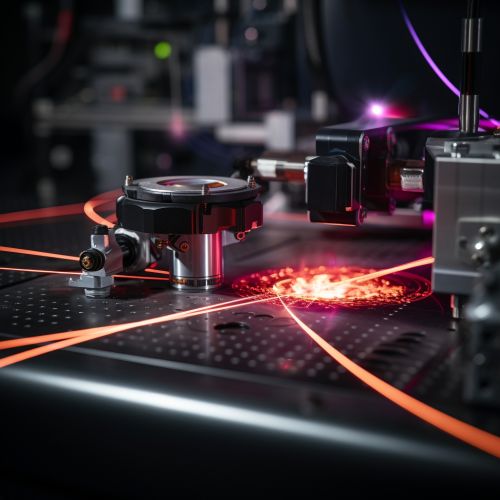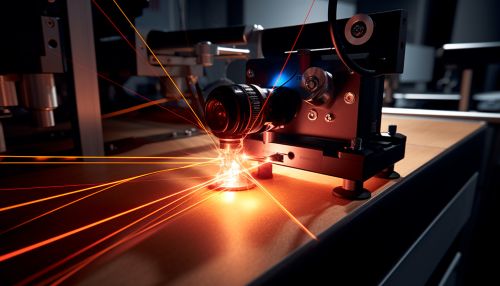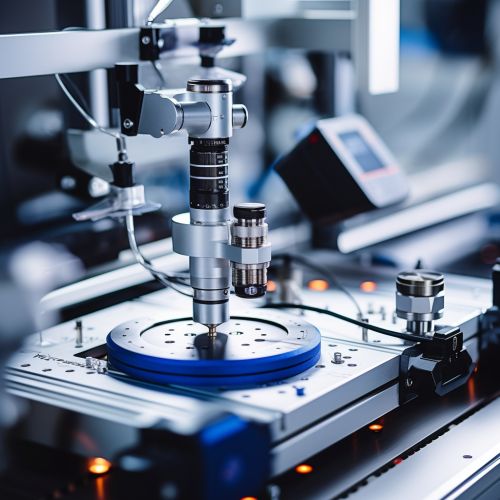Quantum Optomechanics in Precision Measurement
Introduction
Quantum optomechanics is a field of research that explores the interaction between light and mechanical motion at the quantum level. This field has significant implications for precision measurement, as it allows for the detection and manipulation of mechanical motion with unprecedented sensitivity. Quantum optomechanics is a rapidly evolving field, with advancements in technology and theory continually pushing the boundaries of what is possible.


Quantum Optomechanics: An Overview
Quantum optomechanics is a subfield of quantum optics that focuses on the interaction between light and mechanical objects. The field has its roots in the study of cavity quantum electrodynamics (QED), where the interaction between light and matter is studied in a confined space. Quantum optomechanics extends this concept to include mechanical motion, leading to a rich array of phenomena that can be exploited for precision measurement.
The basic setup of a quantum optomechanical system involves a mechanical oscillator, such as a tiny mirror or a vibrating membrane, coupled to an optical cavity. The mechanical oscillator is designed to move in response to radiation pressure, the force exerted by light. This movement, in turn, changes the properties of the light in the cavity, creating a feedback loop that can be precisely controlled and measured.
Quantum Optomechanics and Precision Measurement
One of the most exciting applications of quantum optomechanics is in the field of precision measurement. The interaction between light and mechanical motion can be used to measure tiny forces and displacements with incredible accuracy. This has potential applications in a wide range of fields, from fundamental physics to technology and engineering.
In a quantum optomechanical system, the position of the mechanical oscillator can be measured by monitoring the light in the optical cavity. The light carries information about the position of the oscillator, which can be extracted with high precision. This allows for the detection of incredibly small displacements, on the order of the quantum uncertainty principle.
Furthermore, quantum optomechanics allows for the manipulation of mechanical motion at the quantum level. By carefully controlling the light in the optical cavity, it is possible to cool the mechanical oscillator to its quantum ground state, where it exhibits quantum behavior. This opens up new possibilities for precision measurement, as it allows for the detection of quantum effects in macroscopic objects.


Key Concepts in Quantum Optomechanics
Radiation Pressure
Radiation pressure is the force exerted by light on an object. This force is incredibly small, but it can be detected and manipulated in a quantum optomechanical system. The radiation pressure can cause the mechanical oscillator to move, and this movement can be measured with high precision. This is the basic principle behind many applications of quantum optomechanics in precision measurement.
Optical Cavities
An optical cavity is a space in which light can be confined for a period of time. In a quantum optomechanical system, the optical cavity is used to enhance the interaction between light and the mechanical oscillator. The properties of the light in the cavity, such as its intensity and frequency, can be precisely controlled and measured, allowing for the manipulation and detection of mechanical motion.
Quantum Ground State
The quantum ground state is the lowest energy state of a quantum system. In a quantum optomechanical system, it is possible to cool the mechanical oscillator to its quantum ground state by carefully controlling the light in the optical cavity. This allows for the detection of quantum effects in macroscopic objects, opening up new possibilities for precision measurement.
Future Directions in Quantum Optomechanics
Quantum optomechanics is a rapidly evolving field, with new developments continually pushing the boundaries of what is possible. Future directions in this field may include the development of new technologies for precision measurement, the exploration of quantum effects in larger and more complex systems, and the investigation of new phenomena at the intersection of quantum optics and mechanics.


